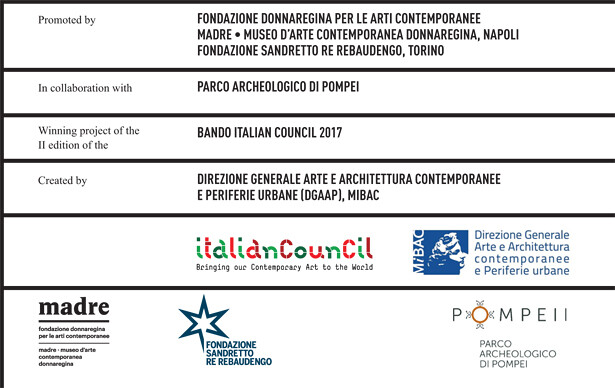Digging Up. Atlas of the Blank Histories
October 25–November 18, 2018
If we plunge into the future envisioned by Chris Marker in La Jetée, we find ourselves in a world in which the surface of the Earth is reduced to a gigantic radioactive wasteland, and humans are forced to live below ground. Here, the victors of the war perform experiments on the vanquished. Since they cannot use space, the scientists in this underground world attempt to exploit the dimension of time. They use prisoners as guinea pigs that they send back into the past hoping to find resources they can use to ensure the survival of humanity, and to repopulate the planet by using the present. In this extended, mobile present, the future may already have taken place and the past may still be taking shape.
Digging Up is an attempt to materialise what in the film we see as a succession of images. It does so by entrusting the journey into the past to core boring, which exemplifies the stratification of time. The cores constitute the DNA of the places they come from and sampling them makes it possible to ensure reproducibility in the future. This reverses the past into a sort of memory of what is to come, and this is impressed upon the material extracted from the bowels of the Earth.
Shown for the first time in 2012 in Kabul, on the occasion of dOCUMENTA 13, the project was expanded and shown again in Cappadocia in 2017. For this new chapter of the Atlas of the Blank Histories, the investigation started out from a series of stories set in Pompeii, both inside and outside the archaeological site, reaching all the way to Vesuvius, in areas such as Castellammare di Stabia, Herculaneum, Torre del Greco and as far as Pozzuoli. We are taken from the discovery in 1936 of an enigmatic magical square in the Large Palaestra in ancient Pompeii, to Lake Avernus, where Virgil set the access to Aeneas hereafter, and which is bound up by spell of Fata Morgana, all the way to the Vesuvius Observatory. The uniqueness of this land is recounted in stories and documents, and in legends handed down by the locals, guiding the way to the places where the core samples were extracted. They are of all kinds, with stories omitted, sometimes concealed, after settling in the subsoil, only to be brought back by means of coring.
Once extracted, each individual core will be examined by geologists, who will analyze its materials and thus identify the various periods in time: a horizontal reading that transforms the core into a sort of timeline—a spatial materialisation of the passing of time. This analysis gives concrete form to the possibility of recreating, in the future, the chemical composition of the ground in a particular geographical area and time, with traces of the stories it has been through contained in its DNA.
Each core sample is shown in a standard conservation box and is later archived together in an iron container, which is sealed and buried underground as a time capsule. This will be buried on Vesuvius, and marked with a local lava stone bearing the date of the burial and disinterment, which will take place in a hundred years’ time. The coordinates will be sent to the International Time Capsule Society (ITCS) in Atlanta.
The material documenting the entire process of implementing the project will be available on www.digging-up.net, along with a collection of essays that give original interpretations of the meaning of core boring.
Digging Up. Atlas of the Blank Histories, a project by Lara Favaretto, presented by Fondazione Donnaregina per le arti contemporanee/Madre · museo d’arte contemporanea Donnaregina and Fondazione Sandretto Re Rebaudengo, with the scientific coordination of Anna Cuomo, won the 2nd edition of the Italian Council competition in 2017, launched by the Directorate-General for Contemporary Art, Architecture and Urban Peripheries (DGAAP) of the Italian Ministry of Cultural Heritage and Activities. The project is a collaboration with the Archaeological Park of Pompeii.


